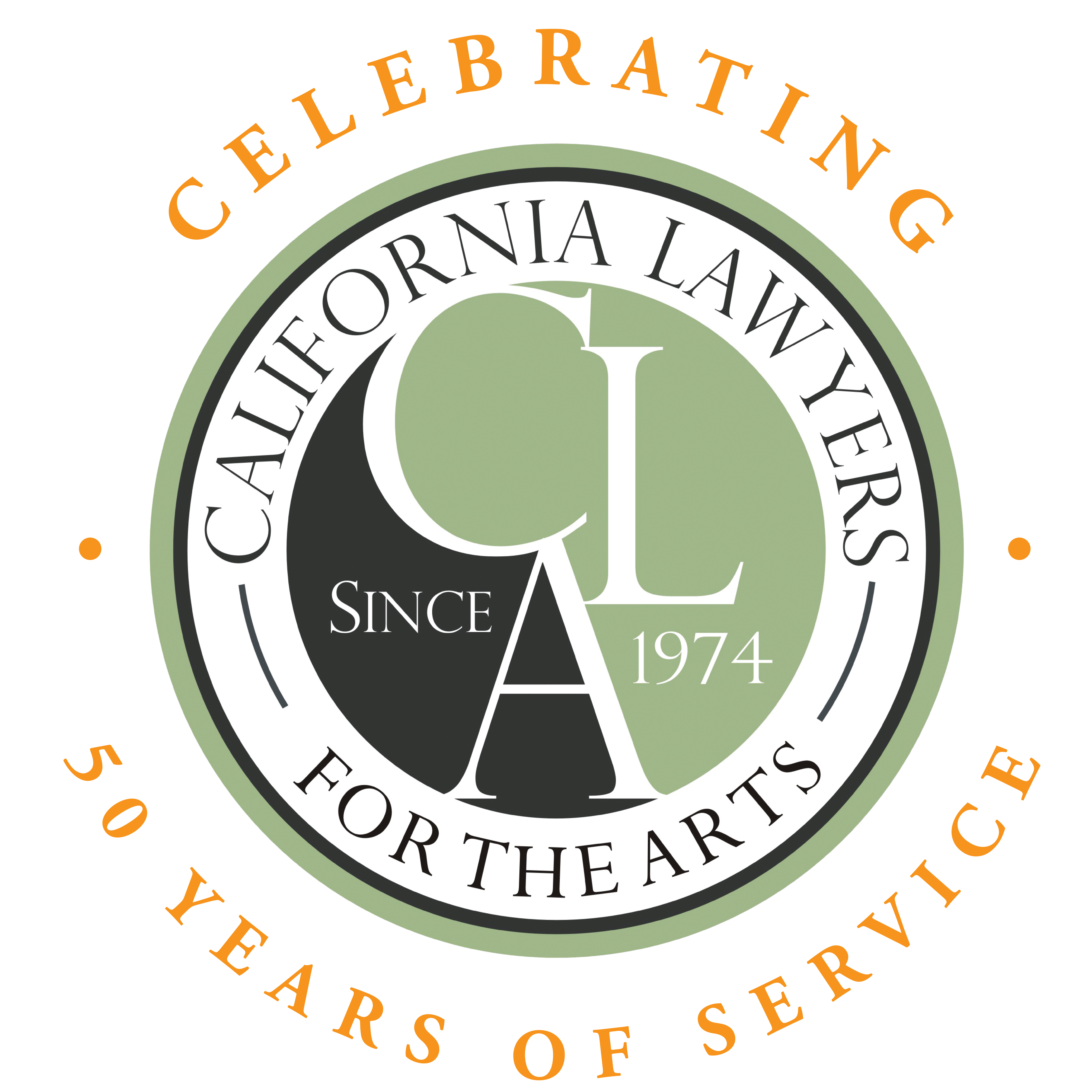Before diving deeper into our challenges for the new year, we need to pay tribute to two generous souls, recently departed, who were significant in the development of California Lawyers for the Arts:
Jerry Carlin, our founding president, who left a career managing legal services for poor people at the San Francisco Neighborhood Legal Assistance Foundation to become a professional artist, paused to create Bay Area Lawyers for the Arts with Hamish Sandison in 1974. Through BALA, Jerry created an organization that brilliantly married his passions of law and the arts. Sandison wrote that "Jerry did as much as anyone to ensure that artists and arts organizations in the Bay Area today are able to obtain...legal advice to support them in their careers--regardless of their ability to pay. In addition, he campaigned successfully through BALA for state legislation to protect artists in their dealings with galleries and to secure them a return on the resale of their works of art--then and now the first and only resale royalties legislation in the United States."
In 1981, Jerry offered me the job of executive director of BALA. I had been hired the previous year to design and implement our national model program providing alternative dispute resolution services for the arts. Jerry continued to work with me in my new role and was hands on when we needed him. I recall one afternoon when we worked together on a grant proposal for the San Francisco Foundation. With sharpened pencils and clean erasers, he added up numbers for the budget while I worked on the narrative. By his example, he also encouraged me to value the relationships with BALA's initial funders, including the Gerbode Foundation and the California Arts Council as well as the San Francisco Foundation, beyond the transactional aspects of grant applications and reports. More recently, he and his wife, the noted actress and director Joy Carlin, arranged for us to meet with state Sen. Loni Hancock of Berkeley to discuss funding for the arts. Jerry passed on January 7, 2014. Until the end, he continued to be a champion for arts and justice, and was one of our most loyal donors. In our last conversation, Jerry was urging CLA to provide more estate planning services for artists in the twilight of their careers.
Helen Major, who was an artist and development professional, helped craft our strategy to expand BALA from a regional organization serving the San Francisco Bay Area, to a statewide arts service organization. When we reached out to Volunteer Lawyers for the Arts-LA with our plan, I followed much of Helen's recipe. Starting with "Relax with Tax," we started offering workshops in Los Angeles in collaboration with VLA-LA. We then surveyed artists, which documented the need for our services and laid the foundation for philanthropic support. Meanwhile, the members of the VLA-LA board were being primed with conversations led by our common board member, Amy Neiman, an LA attorney who had been a law student intern at BALA. Finally, the board members of VLA-LA were invited to join the BALA board, led at that time by Stephen Camber, which had already agreed to change the name of the organization to California Lawyers for the Arts. As a result, we inherited several prominent board members, including California State Senator Diane Watson, who subsequently became a member of Congress; Richard Koshalek, then the director of the Museum of Contemporary Art in Los Angeles; and Daniel Grover, a business affairs executive at Creative Artists Agency who had previously been a member of the staff of BALA.
With our expanded board, we were in a position to obtain grants to deliver services to artists in the Los Angeles area. Early support for capacity building and programs from the California Community Foundation, the LA Cultural Affairs Department, the LA County Dispute Resolution Program and the James Irvine Foundation provided credibility as well as financial resources. We were on the way. Following Helen's common sense approach, we had avoided the complications and liabilities of a formal corporate merger. In my last visit with her just days before her death in October, she asked me how the organization was doing. She was particularly excited when I told her about our work with women in the San Francisco jail as part of our arts-in-corrections demonstration project. She immediately encouraged me to approach women's foundations in order to continue this project. Helen was the mother of San Francisco's third Poet Laureate, devorah major, who is also a CLA mediator, facilitator and consultant on program planning and evaluation.
Both Helen and Jerry were artists who believed strongly in the mission of lawyers for the arts and inspired me to become excited about CLA's institutional development. The strength of their vision and their organizational sensibility, as well as their passion for justice, challenged me to find the way forward through the inevitable peaks and valleys of the non-profit arts landscape. With their energy and support, I always felt that our organization could be a more vital resource for meeting the changing needs of artists and the communities we serve. I miss their presence, but their lessons are very much alive in our work at California Lawyers for the Arts.
Alma Robinson, Executive Director
California Lawyers for the Arts

